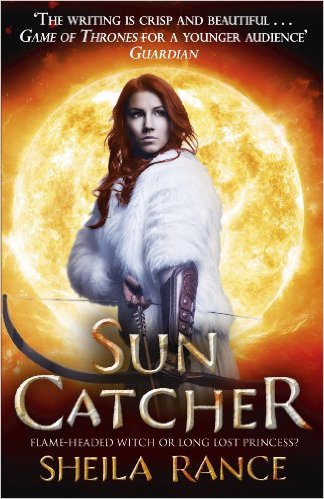(You can read the first part of this post here: http://indranislight.org/female-avatars-helping-teach-about-gender-equality/)
Almost a year has passed since I wrote the original “Female Avatar” post, and I have been waiting, and waiting, to write a victorious follow up. A post where I could tell you that using a female character in that video game, and the conversations that followed, made a difference in how my son views gender.
The problem being, there were no earth shattering changes for me to report from that original conversation.
Sure, there were little signs of change. My son would get excited and cheer on the female contestants in America Ninja Warrior competitions, but he would also comment that “the girls never make it as far as the boys” (which is true, but still made me wonder if his view was changing).
We read, Wings of Fire, a series of books with some female main characters. However, these characters were also dragons, and my son LOVES everything dragon. So, I wasn’t sure if he was accepting the female characters completely, or if he was accepting them because of their dragon status.
My son has also become more accepting of the colour purple, which may seem unimportant, but for years purple has fallen into the category of “princess colour” and “boys don’t like princesses”. Unfortunately, pink, is still a colour that forms a grimace on his now 8-year-old face, and a disgusted comment of “pink is for girls.”
Now, to give the poor little guy a break, he is only 8 years old, so I am not expecting him to approach me and ask to have an in-depth discussion about gender norms and how he can work towards behaving in a manner that supports equality (to be honest, if that DID happen I would be a bit wigged out). But, I have been hoping that something “8-year-old big” would happen, showing that he was starting to see that boys and girls are equals.
That 8-year-old-big event happened last week.
We were in Kids Books, an amazing bookstore in Vancouver BC, shopping with Fionn’s cousins for some books for his birthday the following day. I was looking through some 7 to 10-year-old book series when I felt a poke. Looking down I saw Fionn, three books precariously clutched in his arms, looking up at me.
“Daddy, how about these books, they sound awesome”
“You’ve read the backs?” I asked, taking the books from his hands.
“Yes, they sound really cool.”
“For you to read, or for me to read to you?”
“I think I can read them, but I want you to read them to me.”
I looked down at the first book and the 8-year-old-big moment happened when I saw the cover:
Let’s break this down from the view of a Dad, trying to teach his son about gender equality, and see that boys are not better than girls:
- The picture on the front of the book is clearly a girl, and he still chose to pick up the book and read more.
- The subtitle of the book has the word “witch” (a “girl” word) in it.
Most importantly, and amazing for me:
- The subtitle has the word “princess” in it. A word that my son, and all of his friends usually have an allergic reaction to, with much frowning and spitting, followed by “princesses are dumb.”
All right, as earth shattering as this book selection already was for me, it might not be convincing for you. Totally understandable.
I smiled down at Fionn as I turned the book over to read the back, which read:
“Silk tells stories. It sings of secrets long forgotten. It sings of fire. Maia dreams of being a Story Teller, or a Weaver, like her father, Tareth. But when the Watcher names her Sun Catcher, she must face a destiny that Tareth has kept hidden from her. For Maia is more powerful than she knows, and she is about to discover that though the sun’s fire may be dangerous…so is she.”
The back of the book makes it clear that the protagonist is female, and, from the sounds of it, a female that will be kicking some serious butt. Looking at the backs of the other two books, each book is clearly about girls leading the way and being the focus of the story. Not just a side character in the book, but a female protagonist.
For me, after just a year ago when my son refused to even think about reading Tamora Pierce’s “Song of the Lioness Quartet” because the main character was a girl, this is a big sign that our conversation around gender equality has shifted.
Whether it was switching my video game avatar to a female character, or the follow up conversations we have had, or the changes I have made in my own behaviors that has brought about this shift I cannot say.
To be honest I don’t care what has made the difference, but I cannot explain how much pride I felt in this simple moment in the bookstore when my son chose Sheila Rance’s trilogy of books to be our next “Dad and Son” reading project.
I looked up from the backs of the books and smiled, “you bet buddy. Let’s get them all, they sound awesome.”
Fionn smiled, turned, and ran off down one of the aisles to look for more books.


